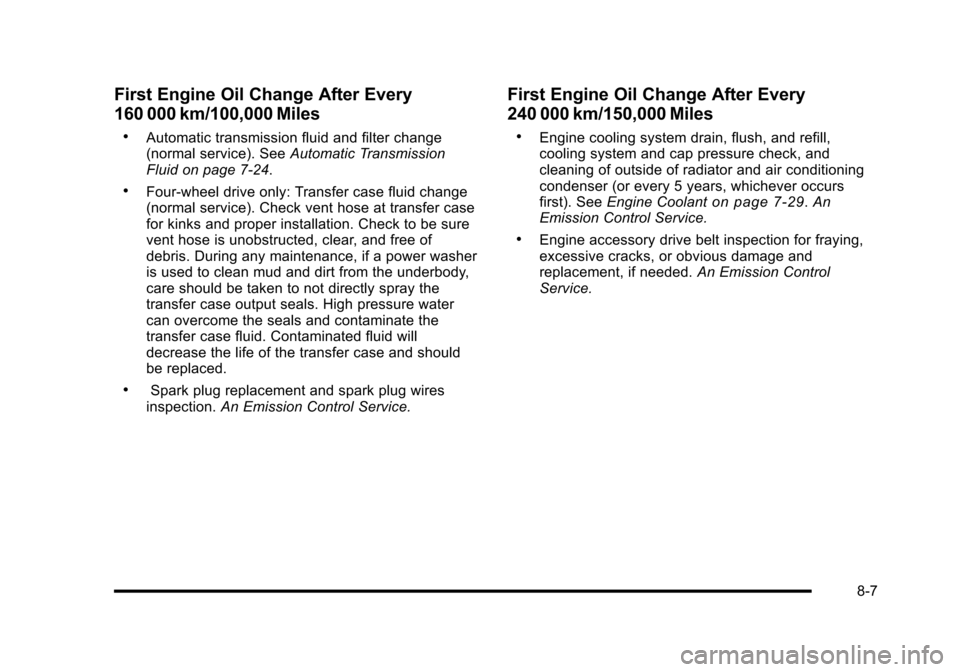Page 479 of 616
If no coolant is visible in the surge tank, add coolantas follows:
1. You can remove thecoolant surge tankpressure cap whenthe cooling system,including the coolantsurge tank pressurecap and upper radiatorhose, is no longer hot.
Turn the pressure cap slowly counterclockwiseabout one full turn. If you hear a hiss, wait forthat to stop. A hiss means there is still somepressure left.
2. Keep turning the pressure cap slowly andremove it.
3. Fill the coolant surge tank with the proper mixtureto the FULL COLD mark.
7-33
Page 480 of 616

4. With the coolant surge tank pressure cap off, startthe engine and let it run until you can feel theupper radiator hose getting hot. Watch out for theengine cooling fan.
By this time, the coolant level inside the coolantsurge tank may be lower. If the level is lower, addmore of the proper mixture to the coolant surgetank until the level reaches the FULL COLD mark.
5. Replace the pressure cap. Be sure the pressurecap is hand-tight and fully seated.
6. Verify coolant level after engine is shut off and thecoolant is cold. If necessary, repeat coolant fillprocedure Steps 1 through 6.
Notice:If the pressure cap is not tightly installed,coolant loss and possible engine damage mayoccur. Be sure the cap is properly and tightlysecured.
Engine Overheating
The vehicle has several indicators to warn of engineoverheating.
There is a coolant temperature gage on your vehicle'sinstrument panel. SeeEngine Coolant TemperatureGage on page 4!35.
In addition, ENGINE OVERHEATED STOP ENGINE,ENGINE OVERHEATED IDLE ENGINE, and a ENGINEPOWER IS REDUCED message comes on in the DriverInformation Center (DIC) on the instrument panel. SeeDIC Warnings and Messages on page 4!48.
You may decide not to lift the hood when this warningappears, but instead get service help right away. SeeRoadside Service on page 9!8.
7-34
Page 567 of 616

Additional Required Services
At Each Fuel Stop
.Engine oil level check. SeeEngine Oilonpage 7!17.
.Engine coolant level check. SeeEngine Coolanton page 7!29.
.Windshield washer fluid level check. SeeWindshield Washer Fluid on page 7!39.
Once a Month
.Tire inflation check. SeeInflation - Tire Pressureon page 7!65.
.Tire wear inspection. SeeTire Inspection andRotation on page 7!71.
Once a Year
.Starter switch check. SeeOwner Checks andServices on page 8!8.
.Parking brake and automatic transmission P (Park)mechanism check. SeeOwner Checks andServices on page 8!8.
.Automatic transmission shiftlock control systemcheck. SeeOwner Checks and Servicesonp a g e 8!8.
.Ignition transmission lock check. SeeOwnerChecks and Services on page 8!8.
.Engine cooling system and pressure cap pressurecheck. Radiator and air conditioning condenseroutside cleaning. SeeCooling Systemonpage 7!28.
.Exhaust system and nearby heat shieldsinspection for loose or damaged components.
.Accelerator pedal check for damage, high effort,or binding. Replace if needed.
.Hood and liftgate support gas strut inspection forsigns of wear, corrosion, cracks, loss of lubricant,or other damage. Check the hold open ability ofthe gas strut. If necessary, replace with genuineparts from your dealer/retailer.
8-5
Page 569 of 616

First Engine Oil Change After Every
160 000 km/100,000 Miles
.Automatic transmission fluid and filter change(normal service). SeeAutomatic TransmissionFluid on page 7!24.
.Four!wheel drive only: Transfer case fluid change(normal service). Check vent hose at transfer casefor kinks and proper installation. Check to be surevent hose is unobstructed, clear, and free ofdebris. During any maintenance, if a power washeris used to clean mud and dirt from the underbody,care should be taken to not directly spray thetransfer case output seals. High pressure watercan overcome the seals and contaminate thetransfer case fluid. Contaminated fluid willdecrease the life of the transfer case and shouldbe replaced.
.Spark plug replacement and spark plug wiresinspection.An Emission Control Service.
First Engine Oil Change After Every
240 000 km/150,000 Miles
.Engine cooling system drain, flush, and refill,cooling system and cap pressure check, andcleaning of outside of radiator and air conditioningcondenser (or every 5 years, whichever occursfirst). SeeEngine Coolanton page 7!29.AnEmission Control Service.
.Engine accessory drive belt inspection for fraying,excessive cracks, or obvious damage andreplacement, if needed.An Emission ControlService.
8-7